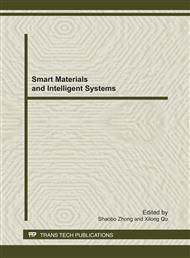p.62
p.67
p.71
p.76
p.81
p.87
p.92
p.99
p.104
A Nano-SiO2 Form-Stable Phase Change Material for Building Thermal Energy Conservation
Abstract:
A stable form-phase change materials (PCM), based on capric-lauric acid eutectic served as the absorption material and the support of nano-silica material to prepare by sol-gel method. The best ratio capric-lauric acid eutectic combination is determined for 60 wt. %. Capillarity because of the influence of the hydrogen bonding, fatty acid and eutectic can be fixed in the three dimensional network structure of the construction of the silicon atom bonds and O still so solid sample melting point composite heating more fatty acid eutectic. Form and chemical properties of the composite phase change the transmission electron microscope, semi and Fourier transform infrared method.- Differential scanning calorimetric hot method is used for measuring phase transition temperature and phase change of latent heat composite, value 19.57 and 71.28 J/g , respectively. At the same time, service performance and other composite material thermal stability and thermal conductivity coefficient test using thermo gravimetric analysis and transient hotline method, respectively.
Info:
Periodical:
Pages:
81-86
Citation:
Online since:
January 2012
Authors:
Price:
Сopyright:
© 2012 Trans Tech Publications Ltd. All Rights Reserved
Share:
Citation:


